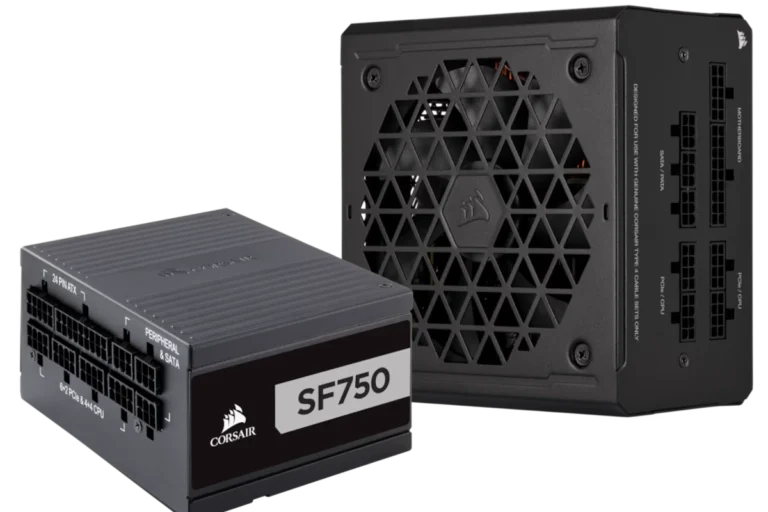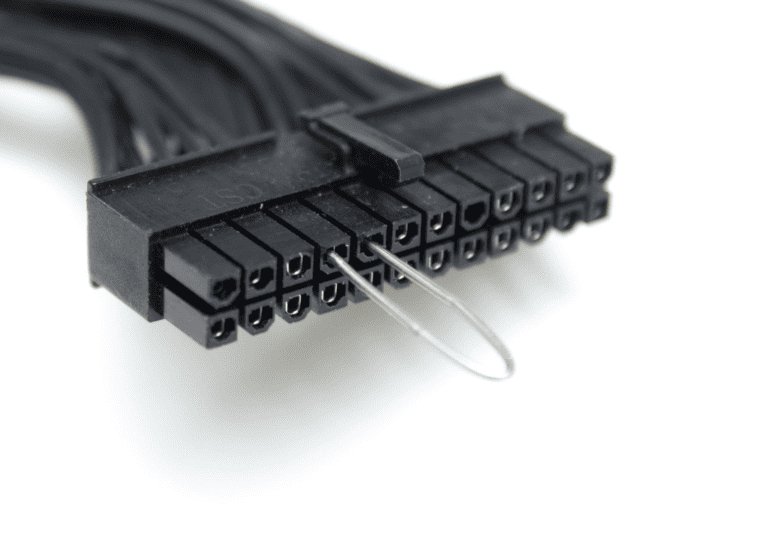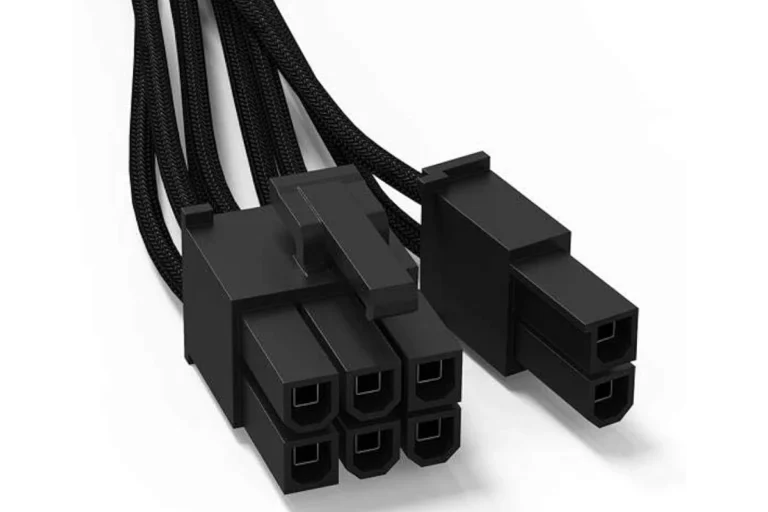While graphics cards and processors often steal the limelight, the unsung hero of our computers, the PSU, is undergoing a significant transformation with the introduction of ATX 3.0.
The ATX 3.0 power supply unit (PSU) has arrived, marking a significant leap in the evolution of PC power supplies. With a 16-pin power cable and a plethora of new features, the ATX 3.0 is set to redefine how we think about powering our PCs.
What Is ATX 3.0?
ATX 3.0 represents a major leap forward in power supply unit (PSU) design. It’s crafted specifically to handle the demanding requirements of next-generation hardware, such as the power-hungry GPUs in the RTX 40 series from Nvidia. The standard was released in March of 2022 by Intel with the purpose of moving us into the modern generation of power hungry hardware and graphics/AI processors. This standard (ATX Version 3.0 Multi Rail Desktop Platform Power Supply) is the first major change in PSU specifications since ATX 2.0 was introduced back in 2003.
You can read the news release below, visit the Intel News Release site, read the specification PDF, or view the press release at the end of this article.
Exploring ATX 3.0: The Future of Power Supply Units
Improved Power Handling
ATX 3.0 PSUs deliver a huge boost in power-handling capabilities:
- Increased power excursion: ATX 3.0 can cope with double the overall power spikes and triple the GPU power spikes compared to older standards.
- Low-load efficiency: These PSUs offer 70% efficiency even under low-load scenarios, improving overall system efficiency.
Simplified Connectivity
Say goodbye to cable clutter! ATX 3.0 introduces a streamlined connection for graphics cards:
- 12VHPWR connector: This single 16-pin connector delivers a massive 600 watts of power directly to your GPU, eliminating the need for multiple cables or adapters.
Enhanced System Stability
Power fluctuations can damage sensitive computer components. ATX 3.0 combats this with its advanced design:
- Spike protection: PSUs built to the ATX 3.0 standard can withstand short, regulated spikes of up to 200% of their peak power rating, safeguarding your system.
Should You Upgrade?
If you’re looking to build a top-of-the-line PC with an Nvidia 40 series graphics card, an ATX 3.0 PSU is a worthwhile investment. But if you’re running an older GPU or a more modest system, your existing PSU might still be perfectly suitable.
Here’s a quick comparison table to help you understand:
| Feature | ATX 2.x | ATX 3.0 |
|---|---|---|
| Peak power excursion | 100% | 200% |
| Low-load efficiency | Varies | 70% |
| 12VHPWR connector | No | Yes |
Choosing an ATX 3.0 PSU is a smart move for anyone who prioritizes cutting-edge performance, streamlined cable management, and rock-solid system stability.
ATX 3.0: Powering the Next Generation of PCs
ATX 3.0 is the latest revision of the ATX power supply standard, released in 2022. It’s designed to address the ever-increasing power demands of modern computer hardware, particularly high-performance graphics cards like the NVIDIA RTX 40 series. Here’s a breakdown of what’s new and exciting about ATX 3.0:
| Feature | Description |
|---|---|
| Increased Power Handling | ATX 3.0 introduces a new 16-pin (12VHPWR) PCIe connector that can deliver up to 600W of power directly to your graphics card. This is a significant jump from the 300W limit of the older 8-pin PCIe connectors. |
| Improved Power Efficiency | ATX 3.0 PSUs boast stricter efficiency requirements, especially at low loads. This translates to lower power consumption and potentially reduced electricity bills. |
| Enhanced Stability | ATX 3.0 addresses the issue of “power spikes” that can occur during sudden bursts of workload, like in demanding games. PSUs now need to withstand a temporary 200% power increase, ensuring system stability even under extreme conditions. |
| Smarter Communication | ATX 3.0 PSUs can communicate directly with your motherboard and graphics card, enabling better power management and preventing overload situations. |
Who Needs ATX 3.0?
While ATX 3.0 offers several benefits, it’s not necessarily a must-have for everyone. If you’re running a mid-range system with older hardware, your current PSU might be sufficient. However, if you’re planning to build a high-end PC with a powerful graphics card like the RTX 40 series, or if you simply want the latest and greatest features in terms of power delivery and efficiency, then ATX 3.0 is definitely worth considering.
Tips for Choosing an ATX 3.0 PSU
When shopping for an ATX 3.0 PSU, keep these things in mind:
- Wattage: Make sure the PSU has enough wattage to handle your entire system, including the graphics card, CPU, and other components.
- Certification: Look for PSUs that are certified by the PCI-SIG as compliant with the ATX 3.0 standard.
- 12VHPWR connector: Ensure the PSU comes with the new 16-pin PCIe connector (12VHPWR).
- Brand reputation: Choose a reputable PSU brand known for quality and reliability.
With its upgraded capabilities and focus on future-proofing, ATX 3.0 is poised to become the new standard for powering high-performance PCs.
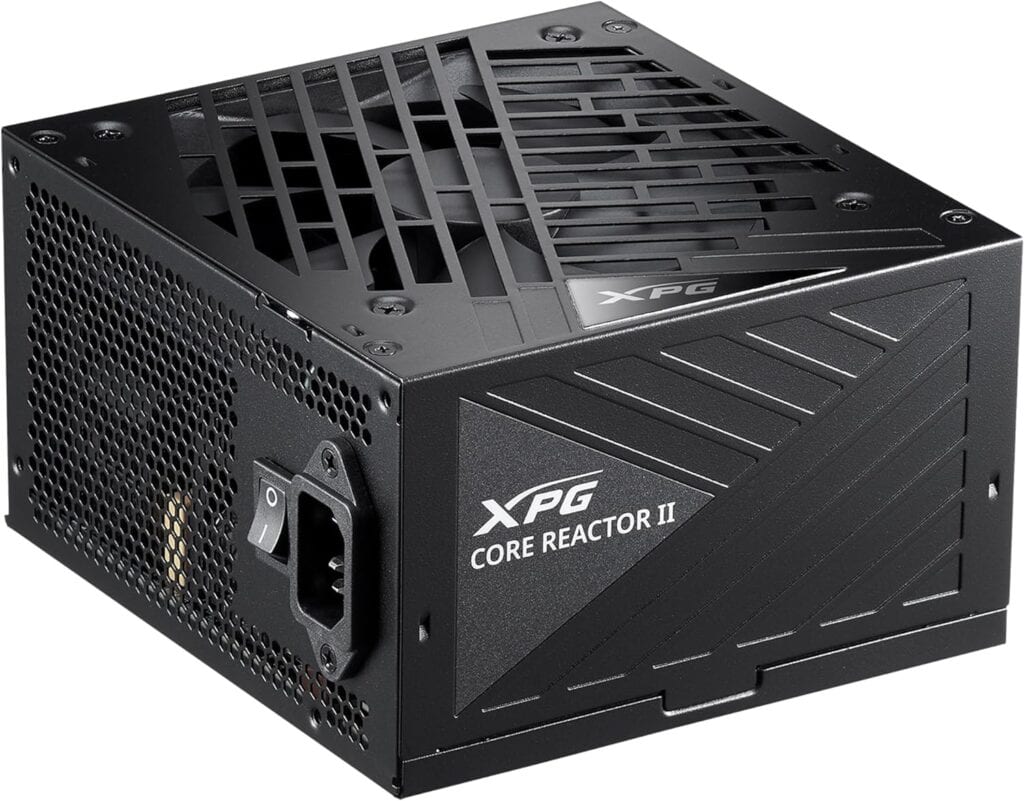
So why the change to ATX 3.0?
Technology, computers, AI, graphics cards, and hardware in general has changed A LOT since ATX 2.0 came out. With the release of Nvidia’s RTX 4000 series this really came to light – the old power supplies were holding back where the technology was headed. So Intel pioneered the 3.0 specification to address this.
High-end graphics cards can now be fed the power they need to deliver cutting-edge performance and state of the art processing capabilities. The biggest change with ATX 3.0 is the PCIe 5.0 12VHPWR connector, which is a 12+4-pin power connector that can deliver up to 600W of juice to a graphics card. This connector is exactly what the GPU industry was calling for to advance cards to the next level. Nvidia was already telling people upgrading to the 4000 series to go big on the PSUs (recommending at least 850W but more like 1000W or greater) but the challenge of getting that power to the card was still there.
The 12VHPWR addresses that directly.
Should You Upgrade To An ATX 3.0 PSU?
Only if you need to. ATX 2.0 is still the most common PSU standard out there and will be for quite some time as motherboard and GPU manufacturers transition. If all things are equal though, it would make sense to adopt ATX 3.0 on your next PSU change to future proof your build. Originally there weren’t a whole lot of options to go with to get an ATX 3.0 power supply but now they’re everywhere. Some of the most popular ones include:
CORSAIR RMx Shift Series
Thermaltake Toughpower GF3
Rosewill CMG1200G5 PCIE 5.0
GAMEMAX 1300W ATX 3.0 & PCIE 5.0
MSI MPG Series
Seasonic VERTEX GX
So in conclusion, there doesn’t seem to be much of a reason to upgrade to an ATX 3.0 PSU if everything is working well for you. If you decide to up your GPU to an RTX 4000 series that might be enough of a reason to go with the new standard. Or, of course, if you’re building a new PC and want it to last that would be another reason.
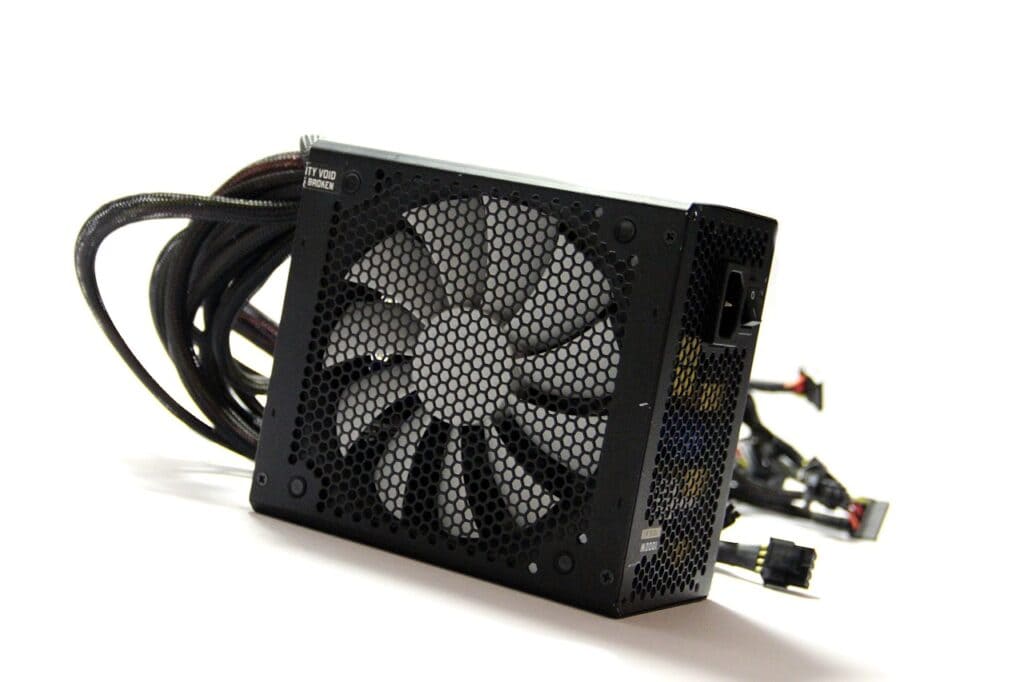
When Was ATX 3.0 Announced?
In March 2022, Intel unveiled the ATX 3.0 PSU standard, marking the first significant change in PSU specifications since the introduction of ATX 2.0 in 2003. This new standard is designed to cater to the modern era of power-intensive hardware and graphics/AI processors.
Intel’s Announcement Highlights:
- The ATX 3.0 specifications are the most notable update since ATX 2.0 in 2003.
- The new 12VHPWR connector will power future PCIe 5.0 desktop Add-in cards, providing up to 600 watts directly.
- The ATX12VO 2.0 spec aims to help the PC industry meet energy regulations, emphasizing efficiency and reduced power consumption.
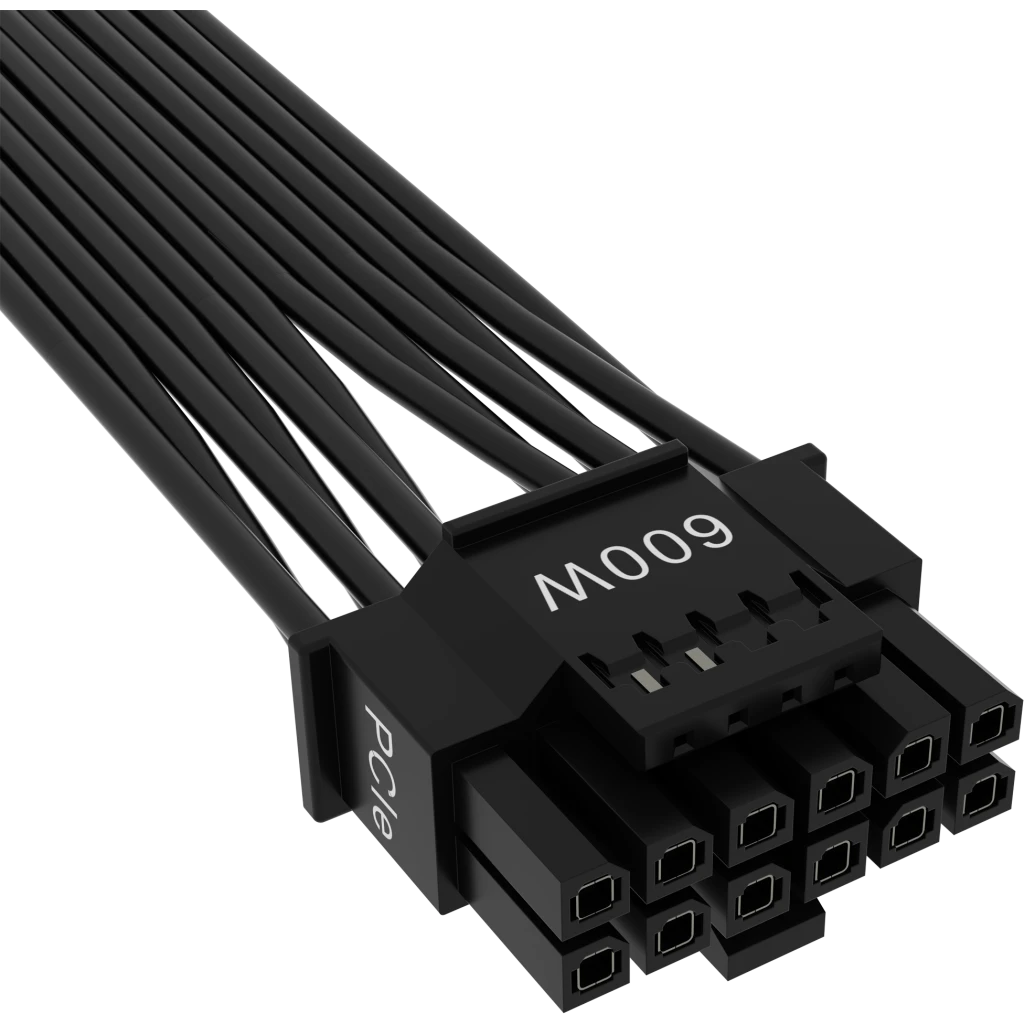
Understanding the ATX12VO Standard
While we’ve talked a lot about ATX 3.0, there’s another player in the game: ATX12VO. This new kid on the block is a variation of ATX 3.0, but with a twist. It only provides 12V power, leaving the motherboard to handle the lower voltages for other components. This makes ATX12VO PSUs simpler, potentially more durable, and a great fit for smaller PCs. If you’re thinking about a compact build, ATX12VO might just be your ticket to a sleek setup.
Top 10 ATX 3.0 Power Supplies Available
Here’s our list of the top 10 ATX 3.0 Compatible PSUs currently available on the market, starting with our favorite and pick for the best ATX 3.0 power supply you can buy, the Corsair RM850e:
| Rank | Make/Model | Form | Efficiency | Wattage |
| 1 | Corsair RM850e (2023) | ATX | 80+ Gold | 850 W |
| 2 | Corsair RM1000e (2023) | ATX | 80+ Gold | 1000 W |
| 2 | Corsair RM750e (2023) | ATX | 80+ Gold | 750 W |
| 3 | MSI A1000G PCIE5 | ATX | 80+ Gold | 1000 W |
| 4 | Corsair SF1000L | SFX | 80+ Gold | 1000 W |
| 5 | MSI MPG A850G PCIE5 | ATX | 80+ Gold | 850 W |
| 6 | Corsair HX1000i (2023) | ATX | 80+ Platinum | 1000 W |
| 7 | be quiet! Pure Power 12 M | ATX | 80+ Gold | 750 W |
| 8 | Thermaltake Toughpower GF A3 – TT Premium Edition | ATX | 80+ Gold | 750 W |
| 9 | be quiet! Dark Power 13 | ATX | 80+ Titanium | 1000 W |
| 10 | MSI MEG Ai1300P PCIE5 | ATX | 80+ Platinum | 1300 W |
As you can see, Corsair seems to be dominating the list of the top ATX 3.0 PSU options and for good reason – Corsair decided to refresh all of their previous top selling lines to incorporate support for the PCIE 12+4-PIN 12VHPWR connector and meet the rest of the standards for ATX 3.0. Going with a Corsair power supply option is always a good idea.
The Evolution of ATX
The ATX standard has come a long way since its inception. Launched by Intel in 1995, the first ATX standard introduced a unified 20-pin connector for motherboards, replacing the older AT plug system. Fast forward to 2003, and we saw the introduction of ATX 2, which was a response to the increasing power demands of CPUs, especially the Pentium 4. Now, almost two decades later, ATX 3.0 emerges in response to the ever-growing power requirements of modern hardware, especially graphics cards and CPUs.
Intel’s Vision for the Future
Intel’s research indicates that the upcoming generation of graphics cards will demand more power. Even as technologies like AMD’s RDNA 3 focus on energy efficiency, the existing PSU systems might struggle to handle the power spikes of these advanced graphics cards. If you’re contemplating investing in an RTX 4000 series or a similar high-end graphics card, it’s time to reconsider your PSU choices. It’s clear that when the Geforce 50 series comes out in 2025, ATX 3.0 will be the standard to power those cards as well.
What Sets ATX 3.0 Apart?
The current PSUs typically feature a 6 or 8-pin connection. ATX 3.0 introduces a game-changing PCIe 5.0 12VHPWR connector with 12 + 4 pins, capable of delivering up to 600W. Given that the RTX 3090 has recorded a power spike of 533W and the RTX 3090 Ti exceeds 650W, you’re already pushing the limits of what an ATX 2.0 PSU can deliver. The RTX 4090 in the maximum power draw scenario (at OC speeds) draws peak power at around 700W, making ATX 3.0 a crucial upgrade. We can only guess what the 5090 will draw once that comes out but the trend with nVIDIA is usually one of MORE power needed, not less.
What’s New with ATX 3.0?
- PCIe 5-Ready: ATX 3.0 is designed to be compatible with the PCIe 5 standard. This ensures that both standards align perfectly, especially in terms of power provision.
- Improved Power Efficiency: The intertwining of PCIe 5 and ATX 3.0 has led to discussions about adopting higher voltages like 24V or 48V instead of the traditional 12V. Higher voltages can offer better power efficiency.
- Communication with the System: One of the standout features of ATX 3.0 is the ability of the PSU to communicate with the system. This ensures that power-hungry components, like graphics cards, don’t draw more power than they should.
- 12VHPWR Power Cable: This new cable replaces the traditional 6 or 8-pin PCIe cable. It’s designed to allow the graphics card to communicate directly with the PSU, ensuring safe power draw levels.
- Power Efficiency Standards: ATX 3.0 sets new standards for power efficiency, pushing the industry towards more energy-efficient solutions.
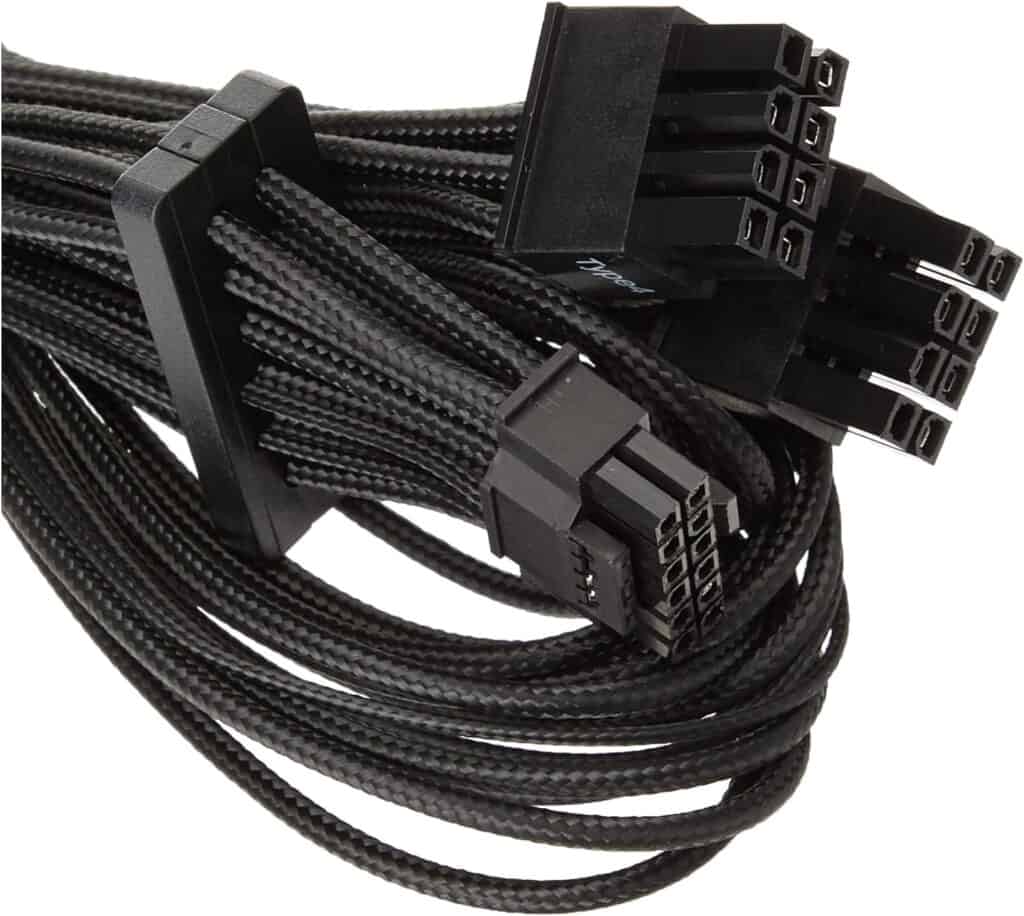
The picture above is an expansion cable for Corsair modular PSUs but is a good illustration of the differences you’ll see in ATX 3.0 / PCI-E 5.0 Gen5 power supplies. You can see the new 600W 12VHPWR connector (pictured at bottom) which would fit and draw power on the modular PSU via Dual 8-pin PCIe connectors (pictured at top).
Addressing Concerns
There have been reports of the 12VHPWR connector on certain graphics cards melting. While this is a rare occurrence, it’s essential to ensure that the connector is properly plugged in and secured before powering on the PC.
There’s been some buzz about the new 12VHPWR connector melting in certain scenarios. While these cases are rare, they highlight the importance of proper installation. Make sure this connector is securely plugged in to avoid any mishaps. It’s like making sure your seatbelt is fastened before driving – safety first!
The Return of Multi-Rail Designs
The increasing power demands of modern PCs have led to a resurgence in multi-rail PSU designs. These designs ensure that no single rail or cable draws too much current, which could lead to potential hazards.
Remember the old debate between single-rail and multi-rail PSUs? Well, ATX 3.0 is bringing multi-rail designs back into the spotlight. With the increasing power demands of modern PCs, having multiple rails ensures that no single cable is overloaded. It’s like having several smaller roads instead of one big highway, reducing the chance of traffic jams in power delivery.
ATX 3.0 vs ATX 2.0: The Evolution of Power
When it comes to powering up your PC, understanding the difference between ATX 3.0 and ATX 2.0 is like comparing a brand-new sports car to a reliable sedan. ATX 2.0, introduced way back in 2003, has been the backbone of many PCs. It’s like that trusty car that gets you from point A to B. But, ATX 3.0? It’s the game-changer, the sports car with all the latest features. Launched in 2022, ATX 3.0 is all about handling the power-hungry needs of today’s high-end graphics cards. Imagine trying to run the latest, power-packed games on an old PC; it just doesn’t match up. That’s where ATX 3.0 steps in, with its 16-pin power cable ready to fuel those intense gaming sessions.
ATX 12V vs ATX 3.0: Powering Up the Future
Now, let’s talk about ATX 12V and ATX 3.0. Think of ATX 12V as the standard power supply we’ve all known, doing a decent job but somewhat limited. ATX 3.0, on the other hand, is like a power booster. It’s designed for the future, ready to support the next generation of hardware. With ATX 3.0, your PC is not just running; it’s sprinting ahead, ready for whatever tech advancements come next.
ATX 2.53 vs 3.0: Why the Upgrade Matters
Comparing ATX 2.53 and ATX 3.0 is like looking at two generations of a tech family. ATX 2.53 has been around, seen a few things, and done its job well. But ATX 3.0? It’s the young prodigy, born to handle today’s tech demands. It’s not just about more power; it’s about smarter power. With features like improved efficiency and better communication with your system, ATX 3.0 is like having a smart assistant for your PC’s power needs.
The Role of Power Excursions in ATX 3.0
One of the big deals with ATX 3.0 is how it handles power excursions – those sudden spikes in power demand from your GPU. Imagine your graphics card is a sprinter that suddenly bursts into a full sprint; ATX 3.0 ensures your PSU can handle this without tripping over. This is crucial because even the latest GPUs like the RTX 4090 can demand a lot more power in an instant, and you don’t want your system to crash mid-game.
Efficiency and the Environment
ATX 3.0 isn’t just about power; it’s also about efficiency. With stricter efficiency requirements, especially at low loads, ATX 3.0 PSUs are not only good for your PC but also for your electricity bills and the environment. It’s like having a car that gives you more miles per gallon – good for your wallet and the planet!
Preparing for the Future
With the introduction of ATX 3.0, the nominal voltage of the 12V rail is being boosted to compensate for voltage drops during sudden power surges. This ensures that all connected components receive a steady and reliable power supply.
For those planning to upgrade their PCs with the latest components, especially graphics cards, a robust ATX power supply unit is essential to protect your investment. Nvidia suggests a minimum of 850W for an RTX 4000 card, but considering other power-intensive components, it might be wise to opt for 1000W or more. When the RTX 5000 series is released we’d expect recommended PSUs in the range of 1200W or more.
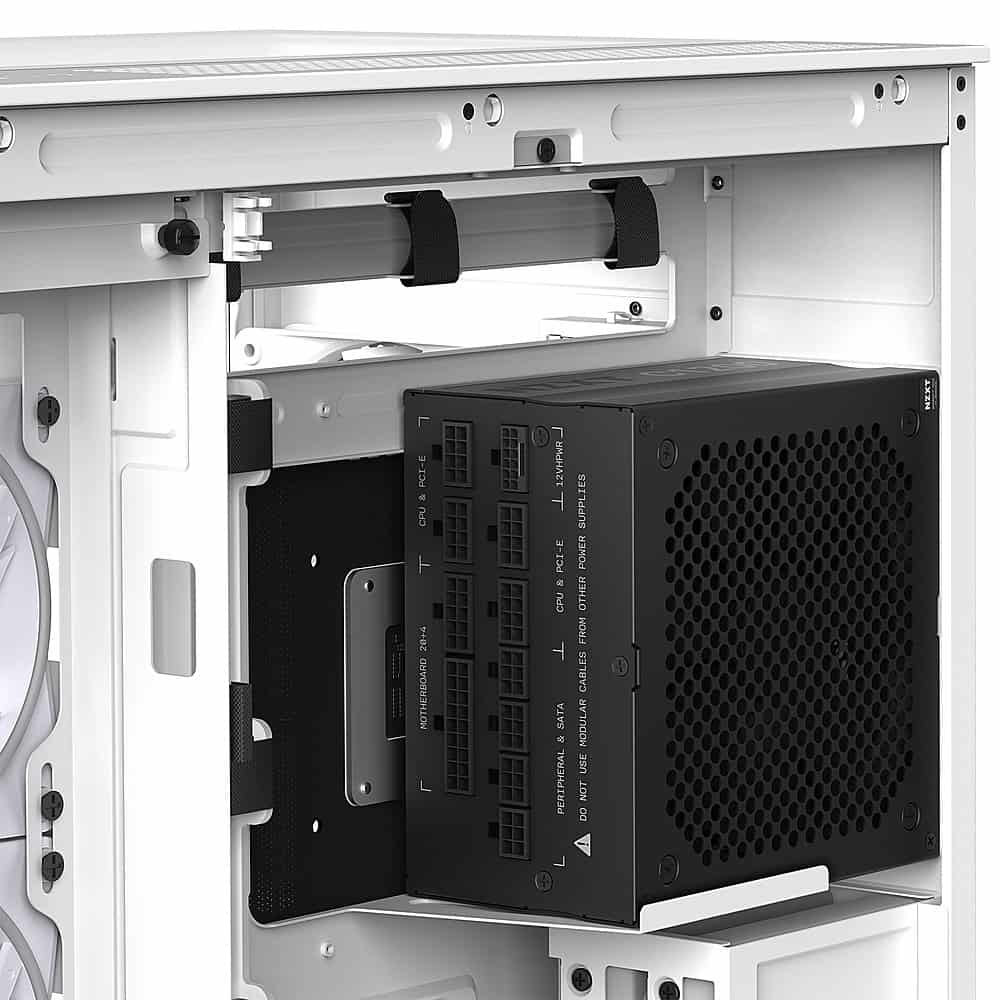
Choosing an ATX 3.0 Compliant PSU: Smart Moves for Your PC
Picking an ATX 3.0 compliant PSU is like choosing the right fuel for a race car. You want something that not only fits but enhances the performance. Look for PSUs that proudly wear the ATX 3.0 badge, ensuring they’re up to date with the latest power standards. It’s about making a smart choice for a system that’s not just powerful but also efficient and future-ready.
The Future of Power Supplies
As we look ahead, it’s clear that ATX 3.0 is setting the stage for the future of power supplies. With the upcoming release of even more powerful GPUs and CPUs, the need for robust and efficient PSUs will only grow. ATX 3.0 is not just a new standard; it’s a preparation for the exciting tech advancements on the horizon.


